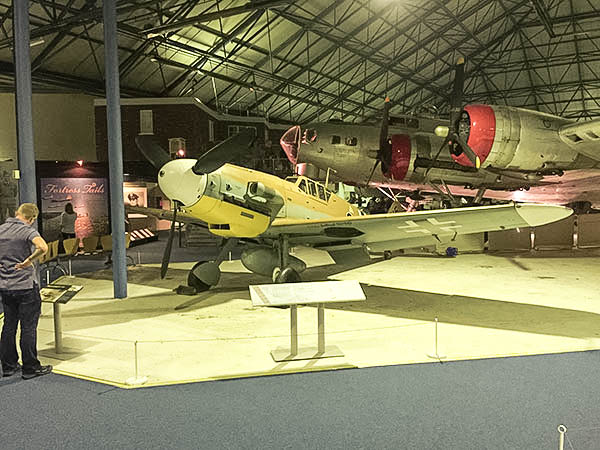
18 Dec MUSEUM MEANDERS 5
Cars, bikes and now planes. With my overseas trip fast coming to an end there was one more piston-driven fetish I had to fulfil – war planes. WWII fighter planes to be exact. With my trip host and travelling encyclopaedia of British history Chris Routledge, we set off to the museum at Hendon Aerodrome, which was considered to be the cradle of British aviation from 1908 to 1968.
As a kid I’d always been fascinated by piston-engined fighter planes; the way they looked, the sound they made when going into a dive, and especially those that could fire their machine guns through the propeller. And, believe me; I was not disappointed. Situated 12 km north-west of Charing Cross, upon arrival one is immediately greeted with a P51 Mustang (the Cadillac of the sky), the plane that made such an impact on the long-range bombing runs into Germany during WWII. And then it all starts – you don’t know what to look at next, always with the fear that you might have missed something or, can we go back and look at that again?
The collection is phenomenal, highlights being the Spitfire Supermarine, and the last remaining Benz-powered Messerschmitt BF109, the Republic P-47 Thunderbolt. Then, as we walk into one of the last displays, a plane that as a young boy always captured my attention, not because it was fast or the best or had the biggest cannons, but because of the teeth they painted on the front air-scoop – the Curtiss P-40. Known in the US as the Warhawk, the two versions supplied to the RAF were known as Kittyhawks or Tomahawks, depending on the version. Another dream come true, another box ticked…
The museum is well worth a visit, not only from an obvious aviation and historical perspective but from an engineering viewpoint as well. What is sad, however, is that it takes a war for some of our greatest aviation innovations to take place. WH






